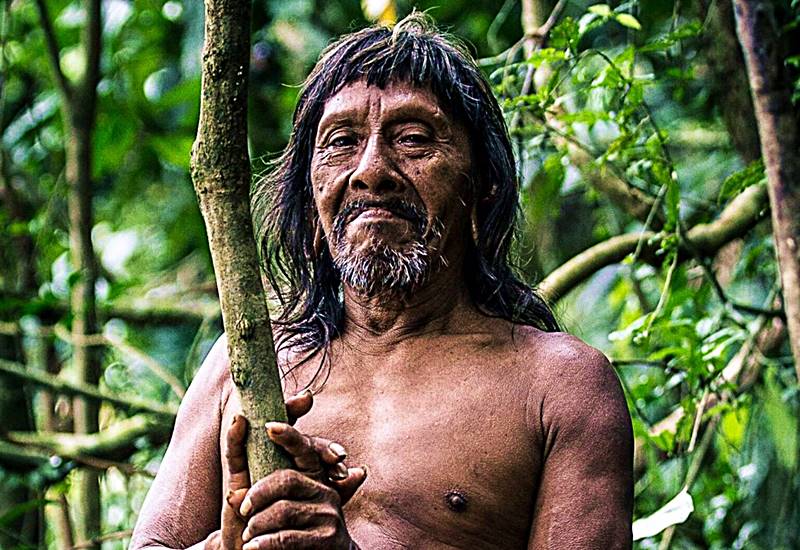Exploring the Sacred Forest, Spiritual Unity, and Ethical Hunting
The Huaorani, also known as the Waorani or Waodani, and referred to as the Waos, are an Indigenous people residing in the Amazonian Region of Ecuador. They possess distinct characteristics that set them apart from other ethnic groups in Ecuador. It is important to note that the term “Auca” is an offensive name used by neighboring Quechua natives and commonly adopted by Spanish speakers. The Quechua word “awqa,” meaning “savage,” is the basis for this pejorative exonym.

With a population of nearly 4,000 individuals, the Huaorani people speak the Huaorani language, which is a linguistic isolate not known to be connected to any other language.
Their ancestral lands are located between the Curaray and Napo rivers, approximately 50 miles (80 km) south of El Coca. These territories span a width of around 120 miles (190 km) and stretch from north to south for 75 to 100 miles (120 to 160 km). Unfortunately, these lands face significant threats from oil exploration and illegal logging practices. Historically, the Huaorani people have used their military prowess to defend their culture and territories from both indigenous adversaries and settlers.

Over the past four decades, the Huaorani have transitioned from a society primarily focused on hunting and gathering to one that predominantly resides in permanent forest settlements. However, several communities, namely the Tagaeri, Huiñatare, Oñamenane, and two groups of the Taromenane, have deliberately chosen to avoid all contact with the outside world. These communities continue to relocate to increasingly remote areas in order to preserve their isolation.
First Encounter: The Tragic Clash Between American Missionaries and the Huaorani
Scott Wallace, a journalist, recounts the initial encounter between American missionaries and the Huaorani in Ecuador during the 1950s. In an attempt to establish contact, the missionaries air-dropped gifts to the Huaorani. However, the inclusion of photographs in the package perplexed the Huaorani as they had never encountered such images before. They regarded these pictures as malevolent and believed them to be sinister magical creations.
Eventually, a group of Huaorani tribesmen encountered some missionaries who had landed a plane on a riverbank. Tragically, the tribespeople used spears to fatally attack the Westerners.
The Inspiring Story Behind the Film ‘End of the Spear’: Based on the Tragic Encounter with the Huaorani
In the animist worldview of the The Huaorani people, there exists a seamless connection between the physical and spiritual realms, where spirits are believed to be present throughout the world. Within their traditional beliefs, the Huaorani once perceived the entire world as a vast forest, using the same word, “ömë,” to describe both. Today, the rainforest of the Oriente region continues to hold immense significance for their physical and cultural survival. It is their home, while the outside world is viewed as unsafe and unfamiliar.
For the Huaorani, as one of them eloquently expressed, “The rivers and trees are our life.” The forest is intricately woven into every aspect of their existence, shaping their understanding of the world in its entirety. Their profound knowledge of the forest’s geography and ecology showcases their deep connection to this natural habitat.
Hunting Practices: Cultural Significance, Ethical Considerations, and Spiritual Unity
Hunting plays a vital role in the Huaorani’s diet and holds cultural significance. Before embarking on a hunting or fishing expedition, the community’s shaman offers prayers to ensure its success. Traditionally, their hunting endeavors focused on animals such as monkeys, birds, and wild peccaries, while land-based predators and birds of prey were excluded. The Huaorani adhered to a range of hunting and eating taboos that guided their choices. For instance, they abstained from consuming deer due to their resemblance to human eyes. While hunting brought them joy and sustenance, they also recognized the ethical implications it carried. The Huaorani understood that when they took the lives of animals for survival, the spirits of the deceased creatures continued to exist and had to be appeased. Failure to show respect and placate these spirits could result in harmful retribution. To counterbalance this spiritual offense, the shaman demonstrated reverence through the ritual preparation of curare, a poison used in blow darts. In their view, hunting with these darts was not considered an act of killing but rather a form of harvesting from the trees.

Due to their longstanding practice of tree climbing, a crucial skill for their way of life, the Huaorani people have experienced physical adaptations in their feet. The tribe primarily relies on hunting monkeys and other small game using spears and blow guns as a major food source. The combination of a limited gene pool, constant exposure to the challenging environment, and the necessity of climbing trees has resulted in the flattening of their feet. Some individuals within the tribe even exhibit the presence of six toes on each foot and six functional fingers on each hand. Interestingly, the structure of their feet undergoes changes over time, starting with straight toes at birth.
In essence, the Huaorani people hold a profound belief in the interconnectedness of their lives with the forest, harmonizing spiritual perspectives, sustainable hunting practices, and an understanding of the delicate balance within their natural environment.
Looking to expand your knowledge about Ecuador? Check out our Everything Ecuador Page!


